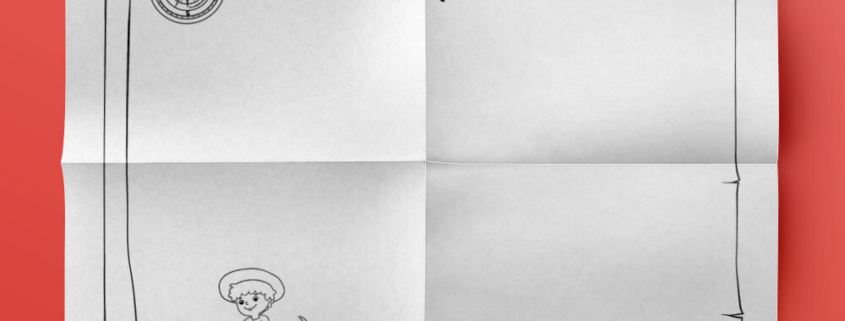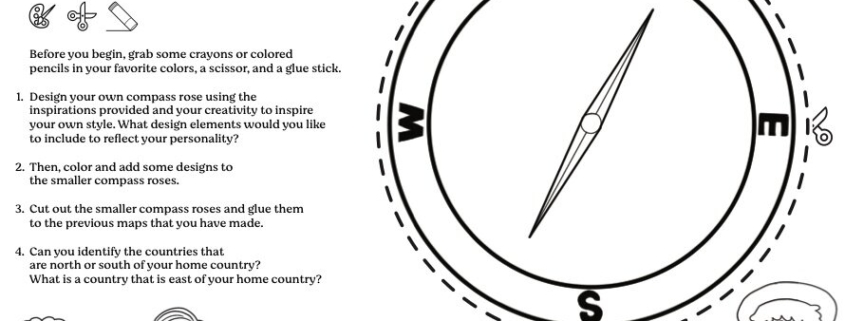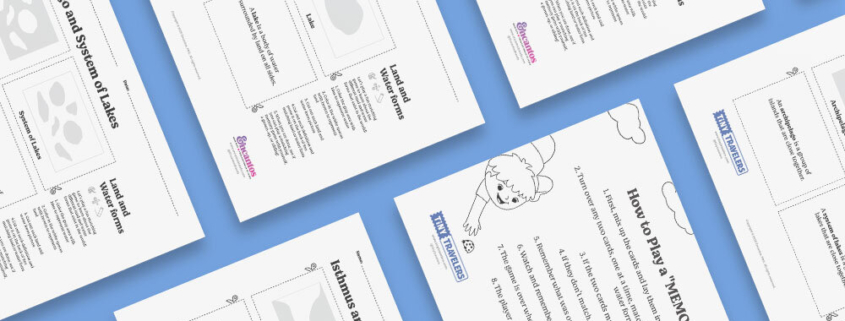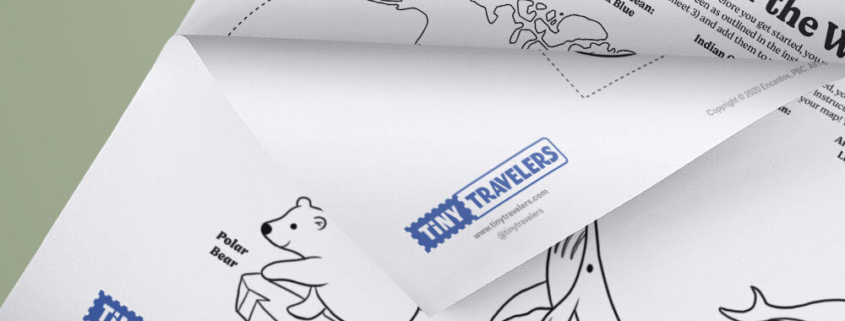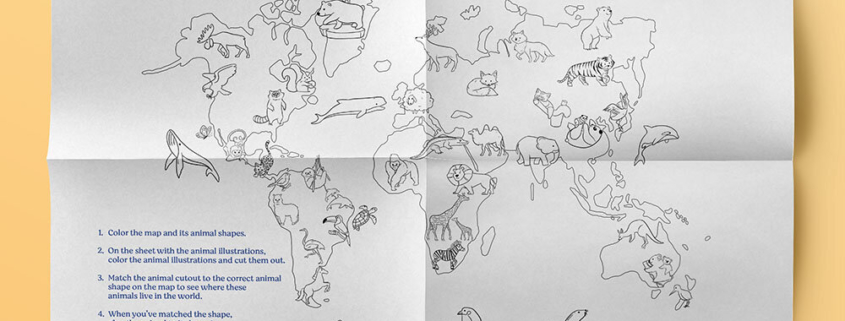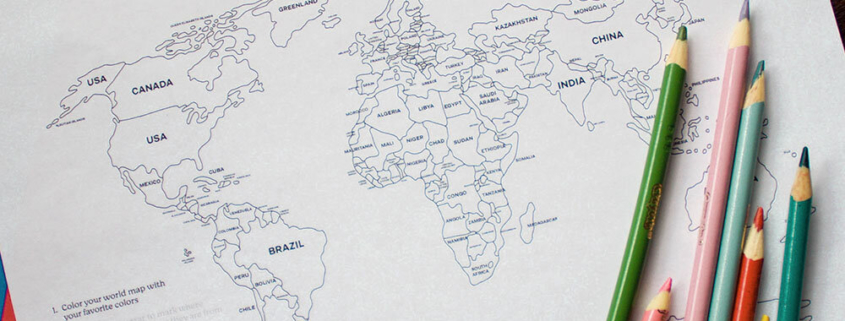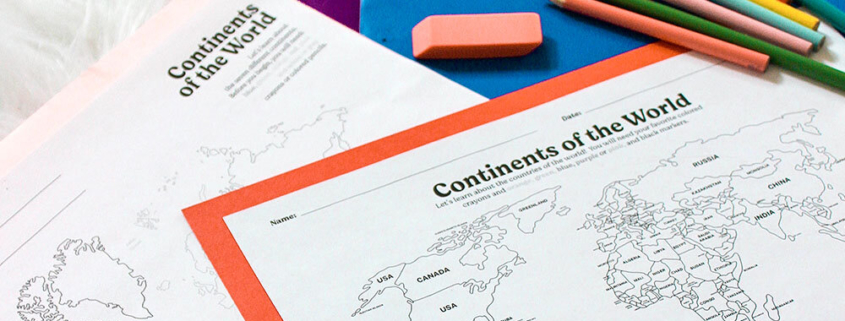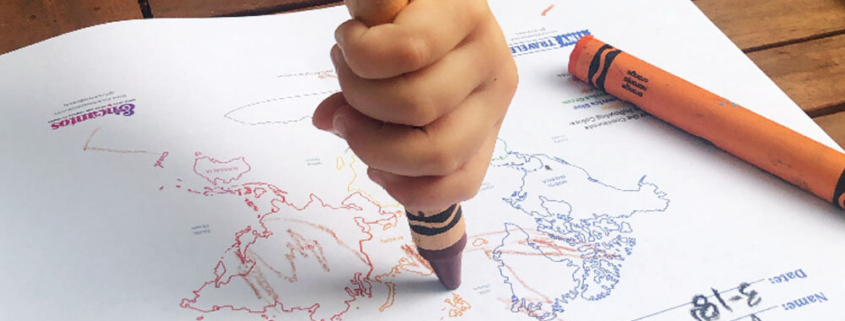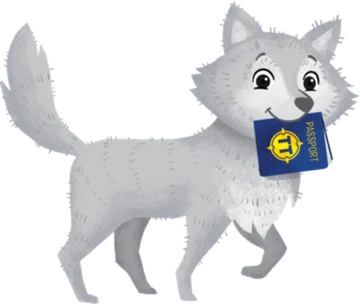Before you begin you will need crayons or colored pencils, scissors, and a glue stick.
We’ll use pictures and symbols to tell a story about the people who live there and create a fun treasure hunt that you can play with other family members.
1) Start with drawing a map of your home. Check out the map examples for some inspiration!
2) Next, draw or cut out pictures and symbols to tell a story about the people who live in your home.
3) Then, add some of the “special symbols” to make your home map into a treasure map!
4) Add a map key with symbols, lines, special shapes, and colors to help readers make sense of the map.
5) You can also use some of the treasure chests or x’s provided to mark the placement of your first treasure.
6) You can make this into a game and hide objects for a treasure hunt game with family members.
